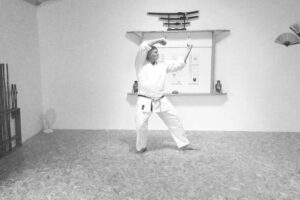 Itosu Anko created the Pinan Kata for use in the Okinawan Elementary School around 1900.
Itosu Anko created the Pinan Kata for use in the Okinawan Elementary School around 1900.
The creation of the Pinan Kata was to make the introduction to Karate easier for children and beginners. It also made it easier to learn the more advanced Kata later on.
The name Pinan was an obvious choice since Itosu was an expert on the Chinese classics, and as such, he would certainly be proud of the Chinese roots in his martial arts.
According to Funakoshi, the Okinawans thought about Chinese things to be fashionable. However, the attitude of the Japanese was different at that time Karate was introduced to mainland Japan. Gichin Funakoshi, therefore, changed the name to Heian, to make the Kata more edible for mainland Japan.
Nowadays, it does not matter if you call them Heian or Pinan. However, Heian will somehow be associated with mainland Japan and Pinan with Okinawa.
Heian can translate into:
- Peace and tranquility.
- Peaceful mind.
Nevertheless, there is nothing tranquil or peaceful about the Heian/Pinan Kata. The techniques are used to hit, kick, and punch our opponent. Some techniques can be used to dislocate the neck, joint locks, etc.
Pinan can be translated into:
- Safe from harm.
- Stay safe.
- Be protected from danger.
This name probably says more about the meaning. The name “Pinan”, chosen by Itosu, is related to their purpose and combative function.
Do you have an opinion about the Pinan/Heian Kata?
Thanks for reading.
Gert
